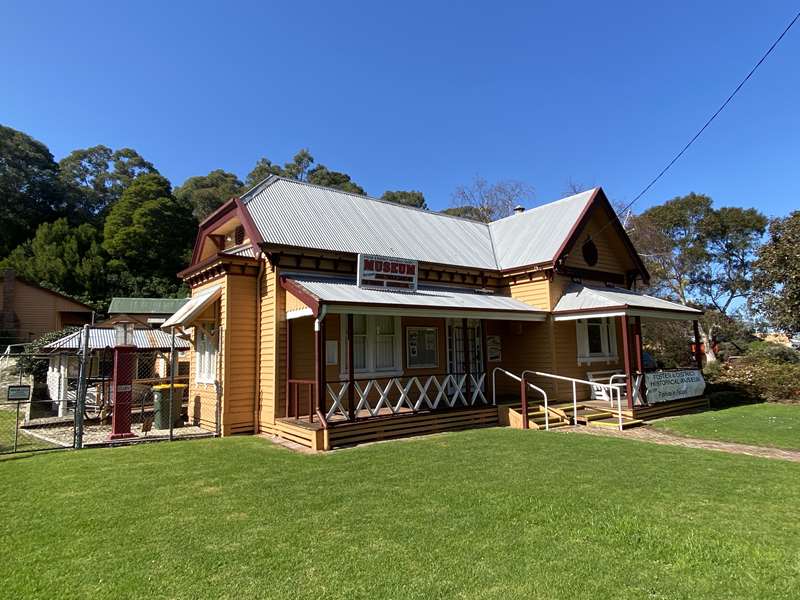Foster Museum


The Foster and District Historical Society operate a volunteer-run museum in Foster.
See how the district developed from the discovery of gold in 1870, the growth of the dairy and fishing industries, the establishment of Wilsons Promontory National Park in 1906 - Victoria's first National Park, to the thriving district of the 21st century.
The Foster & District museum is situated on part of the site of the Victory Gold Mine, opposite Stockyard Creek that runs through Pearl Park. The museum complex comprises:
Foster Post Office and postmaster's residence built 1890, relocated 1974. The building houses the main pioneer displays and exhibitions, including former Shire Offices furniture, paintings and memorabilia.
Scale model Foster Township depicts the town and its layout between the years 1940-1950. The buildings are beautifully constructed in locally grown cypress and banksia woods. Housed in its own building, this extensive model was created over many years by Society member Reg Williams. Photos with the model demonstrate each area as it is today.
Agnes State School 2-roomed cottage converted to 1-room school in 1913. Porch was added later.
Victory - boat belonging to H.L. Lasseter who built and repaired shipping beacons in Corner Inlet long before searching for a lost gold reef.
2-room farm cottage depicting colonial living.
Replica bark slab hut representing the earliest constructed homes.
Foster gaol - moved to the museum in 2010, it was decommissioned in 2009. The gaol houses parts of the old courthouse.
Yanakie portable schoolroom divided in two by folding doors. It was relocated to Yanakie from Strzelecki in 1980; Yanakie School closed in 1993.

The gateway to the wonderful Corner Inlet, Wilsons Promontory and Waratah Bay regions, Foster was settled in 1871. Formally a gold mining town known as Stockyard Creek, gold mining ceased here in the 1930s.
The museum has many displays that demonstrate the development of Foster and surrounding districts from the discovery of gold, the growth of the dairy, fishing, forestry, tin mining industries and the establishment of Wilsons Promontory National Park in 1906 (Victoria's first National Park) through to the thriving districts of the 21st century.
The museum has an extensive collection of photographs that support and chronicle the history of the area and the people who developed and lived in the Corner Inlet and Prom Country districts.
In 1870 John Baragwanath settled at the mouth of the Agnes, River, now known as Barry's Beach.
One of the earliest permanent settlers in the area, Baragwanath was considered a genius and a legend in the district. Come and find out why.
Research and photographic requests are welcome. A fee to cover time and materials is requested.
Several local histories have been written and published by present and previous Society members. These are available for sale, together with other publications relevant to the area.
Foster & District Historical Society Inc. collects and preserves materials such as artefacts, documents, photographs, maps, artwork etc, that are important to Foster and the surrounding districts in order to interpret and exhibit the social history to the public and wider community and for research.
Opening Hours:
Museum Opening Times
Cost:
Museum Entrance Fees
Location
Main Street, Foster 3960 View Map
✆ 0428 821 760
Email Enquiry
Web Links
→ promcountryhistory.org.au









